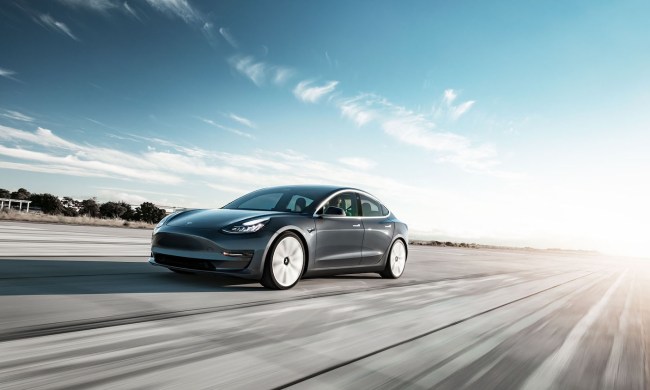Before they can merge into the mainstream, self-driving cars need to learn how to safely and seamlessly navigate a variety of relatively difficult conditions that motorists encounter on a daily basis. Rain, snow, unmarked roads, and construction zones are among the bigger challenges they face. One of Waymo’s self-driving prototypes went above and beyond by successfully sailing through a situation that leaves even some human drivers confused: An intersection where the traffic lights are completely down.
Waymo published a dash cam-like video it sped up on its YouTube channel to show how its Chrysler Pacifica-based test mule handles itself. The car coasts as it approaches an intersection in Tempe, Arizona, and comes to a stop right where it should. It recognizes that there are no lights, and it also identifies a police officer directing traffic in the middle of the intersection which it labels as a yellow rectangle. This is where some motorists would panic; they’d go, stop, go, and eventually end up driving through the intersection at the same time as another car. Waymo’s Pacifica remains cool and collected.
The technology it’s equipped with is capable of identifying hand signals; it knows when the traffic cop tells it to stop, when it’s being told to move, and it acts accordingly. It also knows to obey the officer because it already detected that there is no light where there should be one.
Waymo began teaching its cars to recognize and interpret hand gestures in 2016. At the time, it explained in a Medium post that it wanted its cars to safely share the roads with cyclists. They learned to recognize some of the hand signals commonly used by cyclists when they’re turning, stopping, or changing lanes. It’s this same technology that, thanks in part to artificial intelligence, helped the Pacifica cruise through the intersection.
The company puts safety first, but it could find other applications for its gesture-recognition technology down the road. Currently, passengers approved to use its shuttle service need to hail a ride through a purpose-designed smartphone application. It’s not too far-fetched to imagine that, one day, the shuttle will recognize when it’s being hailed by a pedestrian standing on a sidewalk extending his or her arm.



